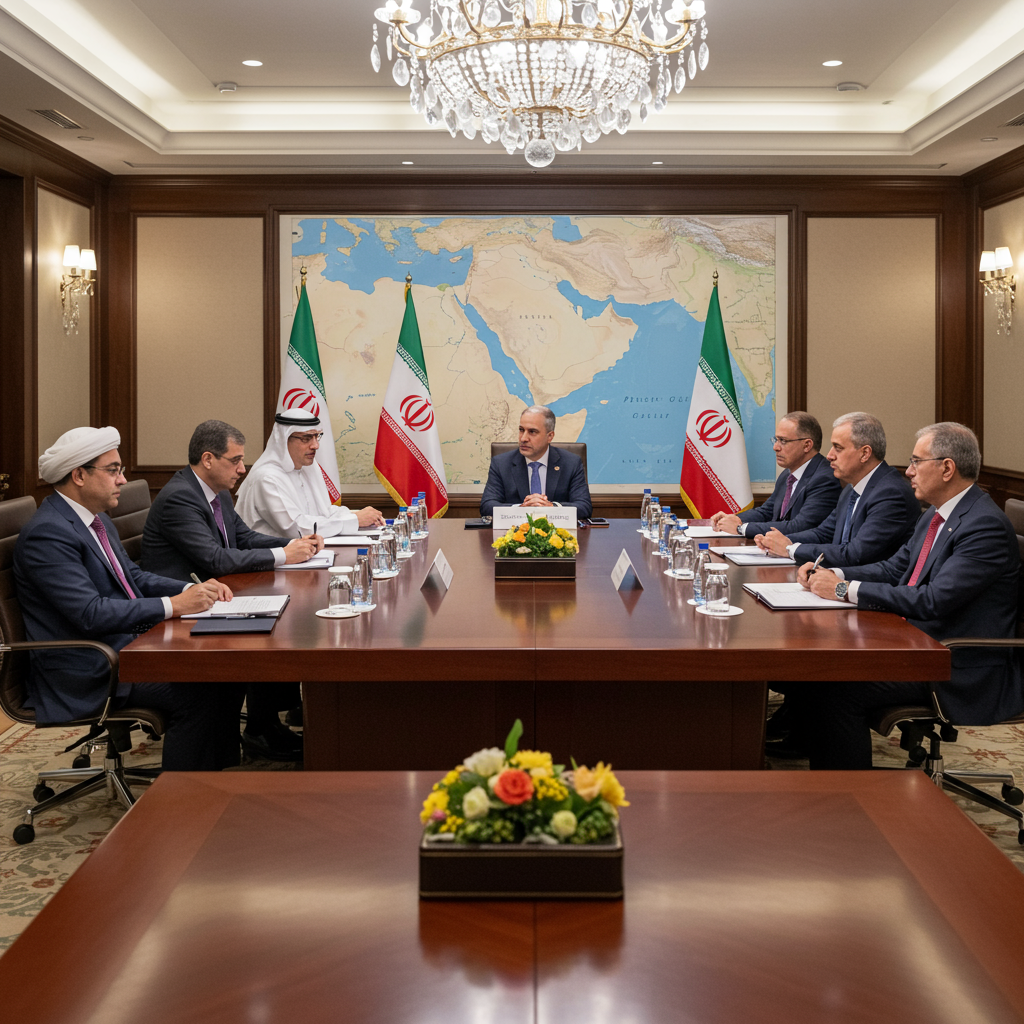Recent Israeli strikes targeting sites across Iran have reignited a critical question: How close was Tehran to developing a nuclear weapon? The attacks, damaging facilities like the uranium enrichment plant at Natanz and resulting in the deaths of military commanders and nuclear scientists, were framed by Israel as necessary to counter an imminent threat.
Prime Minister Benjamin Netanyahu asserted the operation was vital to Israel’s “very survival,” claiming intelligence showed “concrete progress” in Iran’s efforts towards nuclear bomb components, specifically mentioning a uranium metal core and a neutron source initiator. He warned Iran could produce a weapon “in a very short time,” potentially within months or a year, if left unchecked.
Iran vehemently denies seeking nuclear weapons, insisting its program is entirely peaceful and under the monitoring of the International Atomic Energy Agency (IAEA). Its foreign minister condemned the Israeli strikes as “reckless” attacks on “peaceful nuclear facilities,” risking a “radiological disaster” at sites like Natanz, which is subject to IAEA safeguards. Iran has since launched retaliatory strikes.
The Expert & Intelligence Debate: Capability vs. Decision
While Iran possesses significant nuclear capabilities, experts and intelligence officials offer a more nuanced perspective on the immediacy of a bomb.
Expert Assessment: Kelsey Davenport, director for non-proliferation policy at the US-based Arms Control Association, argues that Netanyahu did not present “clear or compelling evidence” Iran was “on the brink of weaponizing.” She notes Iran has been at a “near-zero breakout” time – the theoretical time needed to acquire enough fissile material for one bomb if it decided to do so – for months, and the assessment that Iran could develop a crude weapon in a few months is not new.
US Intelligence View: Crucially, US intelligence agencies continue to assess that Iran is not currently building a nuclear weapon. The Director of National Intelligence testified in March that Supreme Leader Ayatollah Ali Khamenei has not authorized the nuclear weapons program that was suspended in 2003, despite Iran’s stockpile of enriched uranium being at “highest levels and unprecedented for a state without nuclear weapons.”
Timeline Complexity: Experts emphasize that while Iran’s “breakout time” for fissile material might be short (potentially weeks using advanced centrifuges like the IR-6), the subsequent steps needed to build a functional, deliverable nuclear weapon are far more complex and time-consuming. Mastering the processes of shaping the uranium into a fissile core, compressing it, triggering a chain reaction, and crucially, miniaturizing the device to fit a ballistic missile, could take anywhere from 1-2 years to many more months after acquiring the fissile material.
Perception Gap: A significant discrepancy exists between US and Israeli intelligence perceptions regarding the immediate threat. While both likely see similar raw intelligence, the immediate proximity of Iran to Israel can lead to a more urgent interpretation in Jerusalem compared to Washington – as one veteran US official put it, “Where you stand is where you sit.”
Preventive vs. Preemptive: Based on international law and tradition, a “preemptive” attack is against an imminent threat. Experts suggest Israel’s action is more accurately described as a “preventive” attack against a threat that is real but not imminent, a type historically viewed less favorably by the international community.
IAEA Concerns and Iran’s Non-Compliance
Despite Iran’s claims of peaceful intentions, the global nuclear watchdog, the IAEA, has raised serious concerns:
Enrichment Levels: The IAEA’s latest report indicated Iran has amassed enough uranium enriched up to 60% purity to potentially produce nine nuclear bombs if further enriched to weapons-grade (90%). This 60% level is a very short technical step away from weapons grade and is deemed a “matter of serious concern” due to proliferation risks.
Lack of Cooperation: The agency cannot provide assurance that Iran’s nuclear program is exclusively peaceful because Tehran is not fully cooperating with investigations into man-made uranium particles discovered by inspectors at three previously undeclared nuclear sites.
Formal Breach: In a significant development, the IAEA’s 35-nation board of governors formally declared Iran in breach of its non-proliferation obligations for the first time in 20 years. This resolution, supported by key Western powers, cited Iran’s “many failures” to provide full answers since 2019 and warned that the inability to verify the peaceful nature of the program “gives rise to questions that are within the competence of the United Nations Security Council,” potentially leading to a referral and the re-imposition of UN sanctions.
Iran’s Response and Escalation
Iran condemned the IAEA resolution as “political” and lacking a “technical and legal basis.” In direct response to the resolution, Iran announced plans to establish a new uranium enrichment facility at a “secure location” and replace older centrifuges with more advanced machines at its underground Fordo enrichment plant, stating “other measures are also being planned.”
This follows years of escalating breaches by Iran since the US withdrew from the 2015 nuclear deal (JCPOA) in 2018 and reimposed sanctions. Under the JCPOA, Iran accepted limits on its nuclear activities and allowed monitoring in return for sanctions relief. After the US withdrawal, Iran increasingly exceeded these limits, including resuming 20% enrichment at Fordo in 2021.
Impact of the Strikes
Initial assessments indicate the Israeli strikes caused significant damage:
At Natanz, the above-ground pilot fuel enrichment plant (PFEP), used for 60% enrichment and advanced centrifuge development, and electricity infrastructure were destroyed. While the underground hall wasn’t physically struck, the loss of power may have damaged centrifuges there.
Iran also reported strikes on the Fordo enrichment plant and the Isfahan Nuclear Technology Centre. Israel claimed damage at Isfahan included a facility for producing metallic uranium (relevant for weapons) and infrastructure for reconverting enriched uranium.
Experts believe the strikes will increase Iran’s immediate “breakout time” by damaging facilities and potentially destroying enriched material. However, the full impact remains unclear until IAEA inspectors can access the sites.
Looking Ahead: Knowledge Remains, Risks Persist
Despite the damage, experts caution that strikes cannot erase Iran’s nuclear knowledge. Iran can rebuild facilities, potentially faster now due to its advancements in enrichment technology. Furthermore, as long as sites like Fordo remain operational, Iran retains the option to quickly increase enrichment to weapons-grade levels or divert uranium.
The stated goal of removing the Iranian threat through strikes is seen by many experts as unrealistic. The attacks occur amidst complex US-Iran negotiations over a potential new nuclear agreement, which Iran claims the IAEA resolution complicates. Analysts also suggest the timing and targets of the Israeli strikes may have been influenced by geopolitical shifts and domestic political pressures on Prime Minister Netanyahu, framing the action as a necessary response to an existential threat following recent regional events.
Ultimately, while Iran possesses the capability to enrich uranium to high levels, the critical factor remains the political decision to pursue a weapon. The recent strikes have undeniably heightened tensions and complicated efforts to resolve the nuclear standoff diplomatically, leaving the region on edge.


